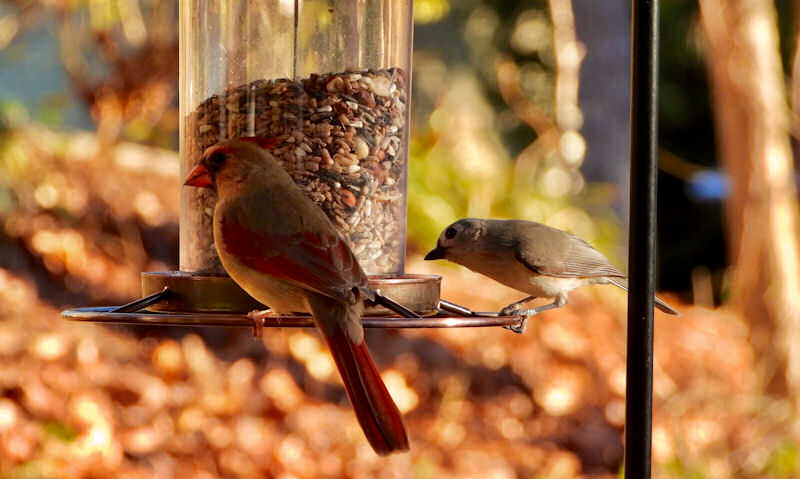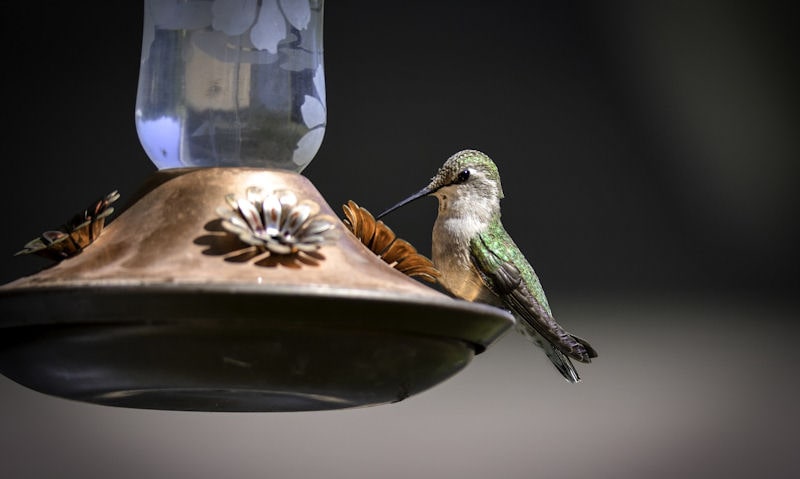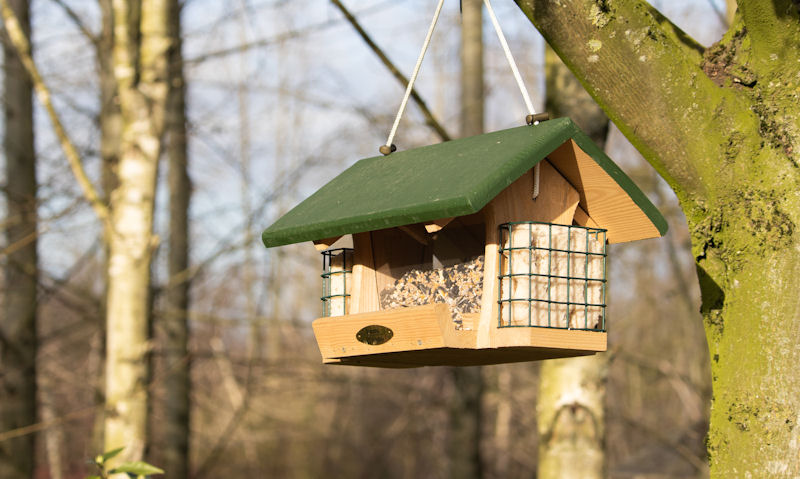How do birds know there is a bird feeder
One concern when thinking about putting bird feeders out for the first time, is how you attract birds to feeders, with wild birds natural instincts sure to help you along.
Birds don't know there is a bird feeder until they stumble upon it by chance; as soon as they leave their nest it could be a matter of seconds before they find a feeder. With the abundance of bird feeders across the country, it isn't hard to miss. With that, noise of other birds can draw a birds attention to feeders.
With millions of bird feeders and a billion more wild birds present across the country, its only a matter of time before any kind of bird feeder is found.
I am referring to bird feeder birds mind thus these same species have evolved to depend on bird feeders - of which will be made available every day of the year - thus there's no going without.
Same wild birds can return to the same bird feeders setup in our yards, but they are always seeking out new locations in the meantime.
How birds know there is a bird feeder in a new location is simply due to every birds routine, they've developed over the months and years.
All it takes for our common backyard birds to search over our front yards or backyards - which will probably be a lit up lawn or with some vegetation - as they stumble upon a bird feeder hung up on a pole or a visible tree branch.
Bird feeders hung up in a dense tree will be found by chance, as wild birds tend to occupy this tree, which is why people hang bird feeders in them.
People really do go out of their way to attract wild birds to bird feeders, and as a result the bird feeders are clearly visible to passing birds.
It is important to hang bird feeders in the sun as the bird feeders will be better spotted in the sun. Birds fly overhead which is how bird feeders are found by new visitors; while old, returning birds will naturally fly back to your yard on a daily basis.
With birds finding bird feeders by sight, sound can be part of it with in fighting between birds drawing attention. Color of bird feeders matters less, yet a vibrant bird feeder can help to attract wild birds to a standout device.
Found on daily foraging flight
While birds go about their daily flight in search of food in suburban areas, a bird feeder will purely be found by chance.
Well, that isn't quite right, due to the abundance of bird feeders in our yards, thus its only a matter of time before wild birds locate bird feeders.
Birds spend most of their time seeking food resources over anything else, as its vitally important they feed in order to survive. Birds have evolved to rely on bird feeders, thus the sight of bird feeders alone is all it takes.
Birds will also remember where your particular bird feeders are located too, and therefore will return to the bird feeders the next day to eat at this reliable food source.
How birds know there is other bird feeders is purely by sight - and sound if you'd believe it - with wild birds finding these food devices suspended off mostly a bracket or bird feeder pole, which are often located in a lit up area over the lawn.
So you see, with the millions upon millions of bird feeders available today - and located in millions of more backyards - it would be near impossible for wild birds to miss feeders, just as it would for people who notice bird feeders in yards as they pass by.
Birds are within vicinity
With those of you who live in a built up suburban area with lots of houses and therefore yards surrounding our property, all this will lead to natural foraging habitats.
Suburban neighborhoods are filled with wide open lawns where wild birds will land to forage for insects or seeds - with the trees and natural vegetation producing idea nesting sites - and a place to forage in among the trees or to hide out.
Make no mistake about it, most common backyard birds who use our bird feeders can only be a stones throw away.
What this means is wild birds will only be several yards away from any one bird feeder location, thus these group of bird feeders will belong to these local birds.
Birds will always be in the vicinity of your yard, and therefore there's always a possibility of wild birds finding new bird feeders in a matter of minutes.
Birds don't know there is a bird feeder until its found originally, only then will birds come back to the same bird feeder - hopefully located in your yard - to feed on what bird feed you provide daily.
Birdsong can attract birds
Its true, while wild birds will find new and old bird feeder locations by sight, the sound of converging wild birds at feeders can attract many others.
With songbirds fighting over what space there is on a bird feeder suspended off a pole, this leads to a lot of noise.
Birds will hear this at some distance away and may very well associate it with food.
As a result, wild birds will be attracted to a popular bird feeder location that is experiencing an uptake in use. And that is why more birds - often of the same species - will show up to empty your bird feeders in no time.
Not so much birdsong that will attract other birds to a certain location of course, but its certainly the loud noise birds make when attempting to feed with scrappy Starlings or Cardinals getting in the way.
Similarly, a static bird bath can be missed, and that is until you install a solar operated fountain feature, as wild birds will be drawn to the noise of running water.
Birds rest or fly overhead
When birds know there is a bird feeder in your particular yard, is when its seen by sight, which is mostly while birds fly overhead.
Birds find things like people do, by eyesight, and in the process they are looking for any accessible food resources.
Similarly, wild birds often land in our yards as a kind of rest stop, with the time spent to notice any worms or insects available on your lawn.
Birds will spend only seconds here or will fly off after more time is spent perching on a bush or fence post. In that time, birds will notice food in bird feeders of which, it could of only been found in this short stay.
Birds find bird feeders where you have it located in a visible area of the yard, with the bird feeders mostly found from a birds eye view - or at ground level as they perch.
Birds will know there's an accessible bird feeder or any food available in your yard, but believe it or not that isn't to say wild birds will 100% feed at feeders. Wild birds may not feel safe in your yard, and so will move on to a new location.
To summarize
Much like anything in life, how animals or people find something can only be by sight, thus bird feeders are found by birds searching for food resources.
Let's not forget wild birds who use bird feeders have come to rely upon the presence of bird feeders in our yards, thus these same birds could be looking out for bird feeders only - as oppose to seeking natural food resources.
Bird feeders are a static device that quietly hang in the yard of what is on a pole or tree branch. Usually this kind of thing will be missed but a wild birds intuition will lead to them investigating a backyard filled with natural vegetation.
Concrete yards with no trees or vegetation at all will find it harder to attract wild birds to.
Birds do know there are bird feeders in the vicinity purely by instincts, because as you can imagine, your Cardinals, Jays, Finches, Robins and many others don't have to venture far until they find the first bird feeder location.
With that, noise made by fighting birds at your bird feeders could lead to other birds converging on the noise, as it will mean there's a food source.
Birds find natural food in the wild as they fly overhead, or perch on branches and other objects, in search of insects or moving bugs on leafs or on the ground.
Bird feeders are regularly investigated by wild birds who may or may not feed out of it.


